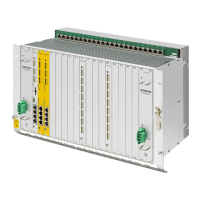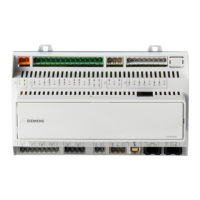Detailed description
2.5 Optimization of the control
Basic logic functions: Velocities, Setpoint/Actual Value Systems, Closed-Loop Control (G2)
Function Manual, 11/2006, 6FC5397-0BP10-2BA0
83
Procedure
1. First optimize the position control loop as a proportional-action controller first using the
tools described in the previous subsections.
2. Increase the tolerances of the following machine data while measurements are being
taken to determine the quality of the position control with proportional-plus-integral-action
controller:
– MD36020 $MA_POSITIONING_TIME
– MD36030 $MA_STANDSTILL_POS_TOL
– MD36040 $MA_STANDSTILL_DELAY_TIME
– MD36400 $MA_CONTOUR_TOL
3. Activate the position control loop as a proportional-plus-integral-action controller by
setting the following machine data:
MD32220 $MA_POSCTRL_INTEGR_ENABLE ; set value 1
MD32210 $MA_POSCTRL_INTEGR_TIME ; integral time [sec.]
Effect of integral time:
– T
n
→ 0:
The control error is corrected quickly; however, the control loop can become instable.
– T
n
→ ∞:
The control error is corrected more slowly.
4. Find the appropriate compromise for T
n
for your application, using these two extreme
cases as outer limits.
T
n
must not be set too close to the instability limit, since there is a risk of damage to the
machine if instability should occur.
5. Use servo trace to trace the travel-in of an automatic program traveling to and from a
target position.
6. Set the servo trace to display the following:
– Following error
– Actual velocity
– Actual position
– Reference position
7. Reset the tolerance values in the following machine data to the required values, once the
optimum value for T
n
has been identified:
– MD36020 $MA_POSITIONING_TIME
– MD36030 $MA_STANDSTILL_POS_TOL
– MD36040 $MA_STANDSTILL_DELAY_TIME
– MD36400 $MA_CONTOUR_TOL

